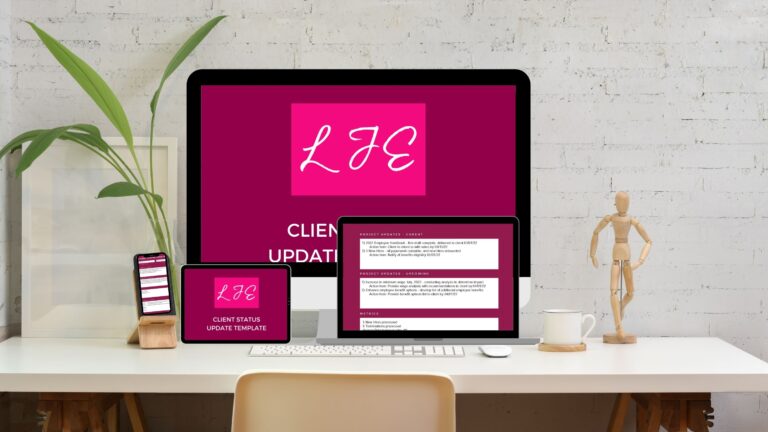Dealing With Customer Complaints in a Service Business Pt 2

By VICKY BROWN
In last week’s episode we talked about how you could deal with, what might be, the truth of your client’s complaints about your service.
If you missed it, go back and take a look.
But now, onward.
So, you’ve figured out how to tackle your client’s valid complaints. Now it’s time to move on to the most complicated part – dealing with the perception.
In fact, you might actually find that the client’s compliant is mostly perception based. Now don’t just assume that – do the exercises in last week’s episode so you’re sure you don’t miss things that need fixing.
But no matter if it’s some, mostly, or all perception based. Perception is everything. So you have no choice – you have to deal with it. But how?
Communication, proactivity and over-delivery.
You’ve got to make sure your client knows what you’re doing and where you are with different projects and assignments. You know, I’ve run into this before – you’re going along, doing your job, taking care of things. And you think everything is great because you aren’t bugging the client with questions, you’re taking care of things before they hit her desk, things are running like clockwork. But the client’s perception is you aren’t really doing anything. They aren’t hearing anything, so they perceive that nothing, or nothing of value, is happening.
I know – crazy right – you get dinged for making things too easy.
Well the key here is communication. You have to communicate, actually over communicate with your client. No, I don’t mean get in his face every two days with, I’m doing this, and I just finished that – after all, your role really is to make things easier for them. So go ahead, absolutely make them easy, just don’t do it in a vacuum.
Status updates and metrics reporting are your friends here. Give your client regular (meaning weekly or bi-weekly) written status updates. A month is too long. And just doing a phone update isn’t enough. Sure, regular scheduled phone calls are great, but send an agenda with a status update for those calls as well. It’ll keep you on track, clarify who’s doing what and where the project currently stands. And if you aren’t doing regular calls, then just send them the status update.
I don’t care if they ever read it – we’re fighting perception here, remember. Just the fact that they’re receiving regular reports from you on your work, goes a long way in knocking down the perception that you aren’t doing anything, or that you aren’t taking action unless they ask you for something.
And don’t forget the twin sister of status updates – metrics reporting. Metrics are the actual numbers. So, you did 25 social media posts last week, 15 on Instagram and they had 200 comments; and 10 on Linked In, and they had 50 comments. You sent out 75 invoices for the client last month, and successfully collected on 5 past due invoices. That’s metrics reporting. And if you want to really blow the client’s mind, do comparison metrics reporting. You know, you did 25 social media posts last week, and that’s up 15% from the amount of posts you did the same time the year prior.
Believe me, metrics are golden. Because they’re numbers; because they help the client clearly track improvement; and they help YOU measure how much work you’re doing for a client.
For instance, if you’re averaging 75 invoices sent per month this year, but last year that average was 15 – well, you probably need to start thinking about how much you’re charging the client. Because if it’s the same amount as the 15 invoices price, then it’s probably time to raise your prices because you’re doing 5 times the work now.
“… you might actually find that the client’s compliant is mostly perception based. …But no matter if it’s some, mostly, or all perception based. Perception is everything. So you have no choice – you have to deal with it.”
You can also use these updates to showcase your proactivity.
After you outline the updates on your projects and assignments; then do a section on metrics reporting, use the next update section to highlight what’s coming up next week, next month, even next year. What’s happening in the industry that might impact the client. This is your time to show off your expertise, and visibly use it to act as a consultant.
And the upside is if all this is baked into your status updates, you won’t find yourself scrambling and trying to figure out when was the last time you gave the client an industry update.
And here’s a pro tip – you can use those same industry updates for all your clients. You don’t need to repeat that work, instead, leverage it.
One of the key weapons in battling perception is to overdeliver.
For instance, as you’re looking at what’s coming down the pike in your industry, that will also give you an opportunity to think about any service changes or improvements you may want to do in the next few months or next year. Then you can start planning for it now. That way, you’ll have the extra added bonus of not only telling the client what’s coming in the industry, but what you actually plan to do about it.

To help you get started, grab my free
Client Status Update Template.
Use this easy to follow template to create your own client status updates. It includes everything you need; a place for updates, metrics reporting, industry updates, and your professional analysis.
In fact, it’s a great idea to use the Status Update template with all your clients.
As you’re putting together that report, or even preparing the status update – make it pretty. Go on Canva and create a template report cover you can re-use. Brand things with the client’s logo, use pictures from their website in that presentation. When you’re composing that eMail that explains the answer to their question, add in links to more information, or add a paragraph at the end telling them how the options you’ve laid out have been applied with other clients.
Go that extra mile, give more than they asked, think all the way through the situation and provide additional resources they may need. I know it may take extra time, and it will certainly take extra effort, but remember you’re fighting perception of a not so satisfied client. It’s going to take a blitz of communication and overdelivering to help them begin to get comfortable again and settled down in working with you.
Once you’ve activated the steps we talked about in this episode and last week’s episode; and lived with them for a while; then check in with the client. Ask how they feel things are going – do they feel their concerns have been or are being addressed.
Listen, I know it’s really gut-wrenching to ask those type of questions, but you’ve got to stand up to the scrutiny. It’s better for your client, and you. And remember, information is power.
